A piercing “jay jay jay” call came from the yard. Could it be? Not hearing the familiar bird call since growing up in Minnesota, I couldn’t believe I heard a blue jay until I saw it.
I stepped outside and looked into the yard, noticing movement in the nut tree near the porch. An unripe nut fell onto the ground and a blue jay quickly flew down to retrieve it. After the blue jay picked up the nut, it flew across the yard. The familiar blue and white bird from my childhood was in my yard even though the bird book showed the western edge of their range ending on the east side of the Rocky Mountains from Texas into Canada.
For the last 20 years, birders have reported blue jay sightings in Idaho, Oregon, Washington and Utah. Some years only a few blue jays are reported in Idaho, other years dozens are reported. In Boundary County, records dating back to 2007 record sightings except for 2008.
The blue jay’s striking coloring is familiar to anyone living or visiting the east and midwest. Unlike resident Steller’s Jays which are blue and black, the blue jay’s belly is whitish, the back, crest and tail are blue. The only black on a blue jay is barring on the blue and white wings and a black bridle across the face, nape and throat. White also speckles the wings, face and corners of the tail.
As in my experience, blue jays are often heard before they are seen. They make noisy calls outside of nesting season and make quite a racket if they see a bird of prey (such as a hawk or owl).
Back east, they are common in urban and suburban areas because of habitat and food. Blue jays prefer forest edges instead of pure conifer stands and deep forests. Blue jays feed on nuts, grains, seeds, fruits and berries, such as elderberries, cherries and dogwood. They will also eat caterpillars (even tent caterpillars), grasshoppers, frogs, beetles and other insects. Despite their omnivorous diet, blue jays tend to eat three times more vegetable matter than animal matter. To eat nuts, blue jays will hold the nut with their feet while perched on a branch and then crack the nut open with its bill.
As I witnessed, blue jays harvest and store nuts for later use, which helps spread trees when they forget where they stashed the nuts–they may only retrieve a quarter of the nuts they stash. Particularly fond of acorns, blue jays have helped spread oak trees across the east. Compared to squirrels, which typically carry nuts a few hundred feet, blue jays will stash nuts over a mile away from the source.
Blue jays also love peanuts and readily snatch them from bird feeders. Blue jays aren’t bashful about eating sunflower seeds and suet from feeders either as long as there is a perch.
Nuts and seeds provide enough food for blue jays to survive the winter, though some populations migrate south. One bird identification book recognizes a wintering population in southern Idaho.
Researchers suggest bird feeders, urbanization and an increasing population have attributed to the blue jay expanding its range to the northwest. The exact number of blue jays in Idaho is uncertain, but at least two live in Boundary County because both noisy blue jays were calling as they were harvesting the nuts in my yard.

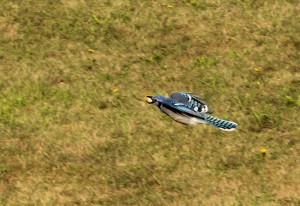
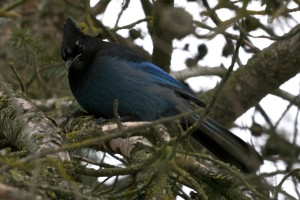
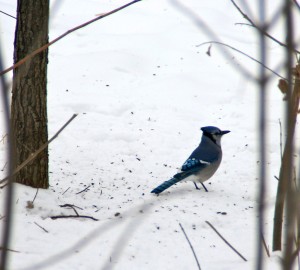
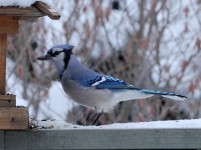

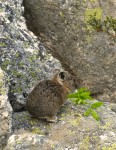
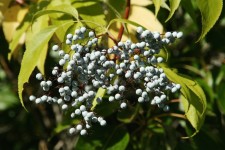
We are watching the eclipse in Elmira and heard that familiar call from our childhood. ….and here is a blue jay! So exciting! So I googled and found your article. 🙂
We are from Michigan originally but live in Idaho now and just had a Blue Jay show up in McCall Idaho at our cabin. We were so surprised and excited!
Wonderful!
My wife took pictures of the first Blue Jay to ever show up at her bird feeders today. Didn’t show up in her Birds of Idaho book so I did an internet search to verify her suspicions that it was a Jay. We have several Stellars Jay hang around so we noticed the top knot similarity. We live south of Cocolalla Lake on the east side of US 95.
We’re from SE Idaho outside of Blackfoot and I told my husband that noise was a Jay. I’m originally from Ohio and that sound is very familiar to me. He got the binoculars out and sure enough, it’s a Blue Jay, a pair of them! I’m so excited!
I live in Glenns ferry, this year i have at least four blue jays eating Seeds I scatter off my patio . They often come all at the same time.
I’ve lived in Idaho Falls for 20 years and saw my first blue jay last fall. This fall they are back again. Having grown up in Minnesota, it was nice to hear and see them again.
My husband and I heard an odd bird call and looked up to see two blue Jays! Could not believe what we were seeing as they both landed where we could observe them. Searched internet and found this article. We live in Grangeville Idaho.
I’m in Blanchard Idaho I have five Steller jays one looks female “ not as shy” stayed all winter this year
I live in Emmett Idaho and we had 4 Blue Jay’s visit our bird feeders in October 2019, here we are March 2020 and we have 3 coming in daily for whole peanuts. Beautiful birds.
Thanks for sharing!
I’m sitting at Marshal Lake and saw two blue jays. I never saw one. Beautiful!
I have been seeing blue jays in a pair that have been in my yard on the bird feeders. This is the first time they have been in my yard. I am in Pocatello. Beautiful birds and a real treat to see!
Thanks for sharing! Blue jays are beautiful birds!
Laura
Saw our first blue jay at our bird feeder in Rigby, Idaho. Thinking of getting peanuts at the store tomorrow.
Wonderful!
Enjoy,
Laura